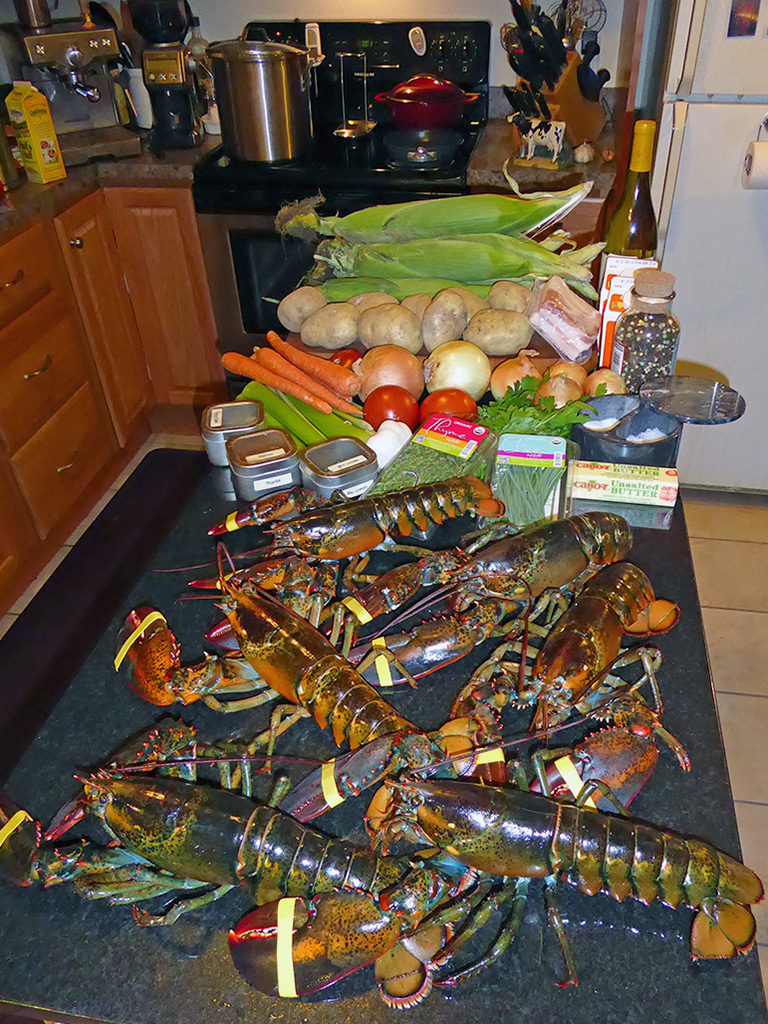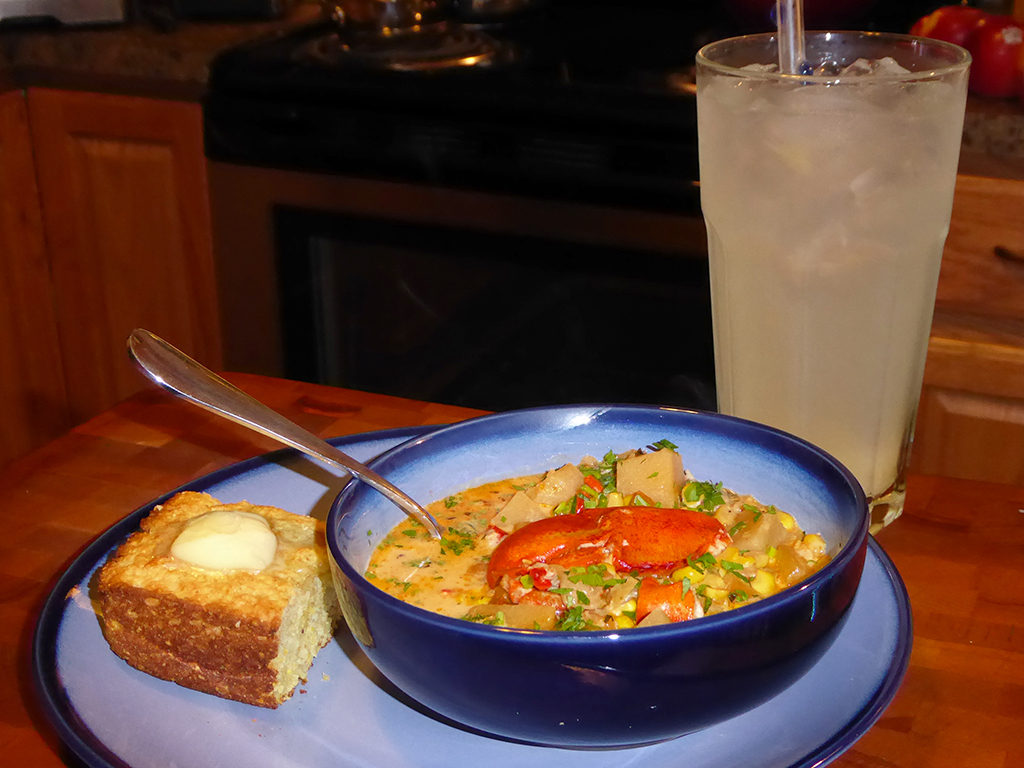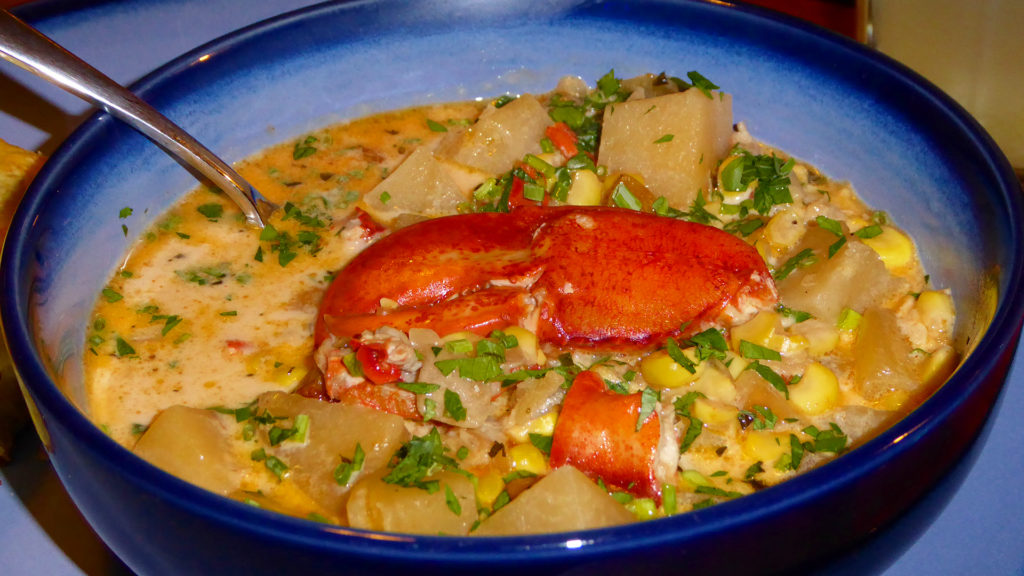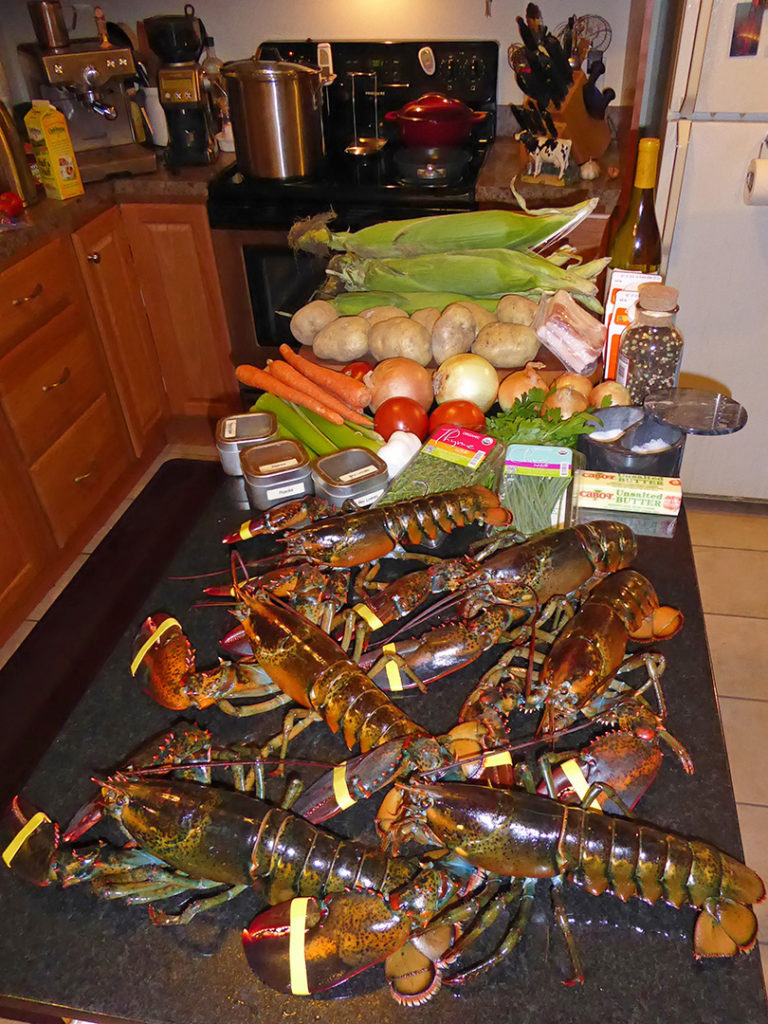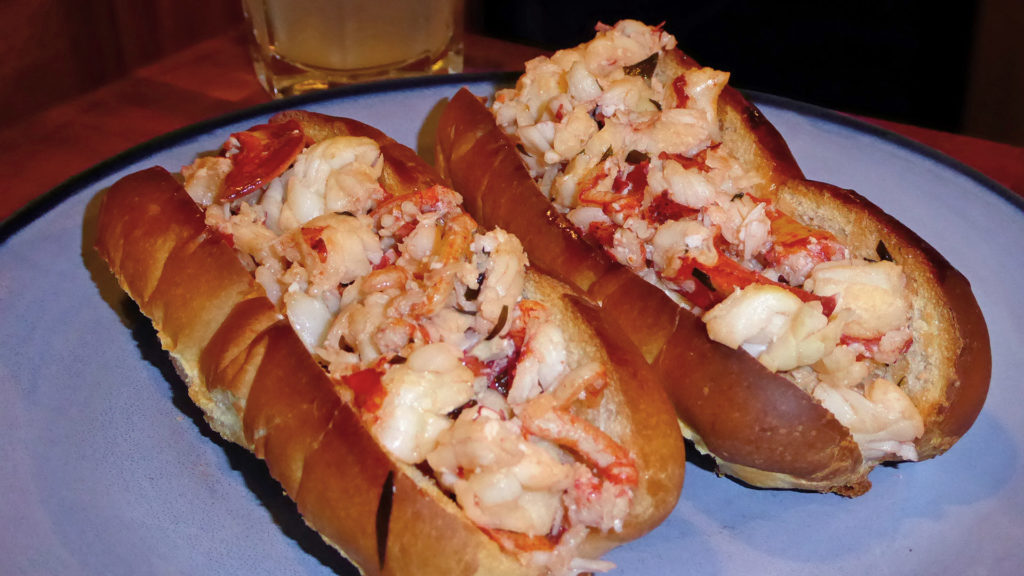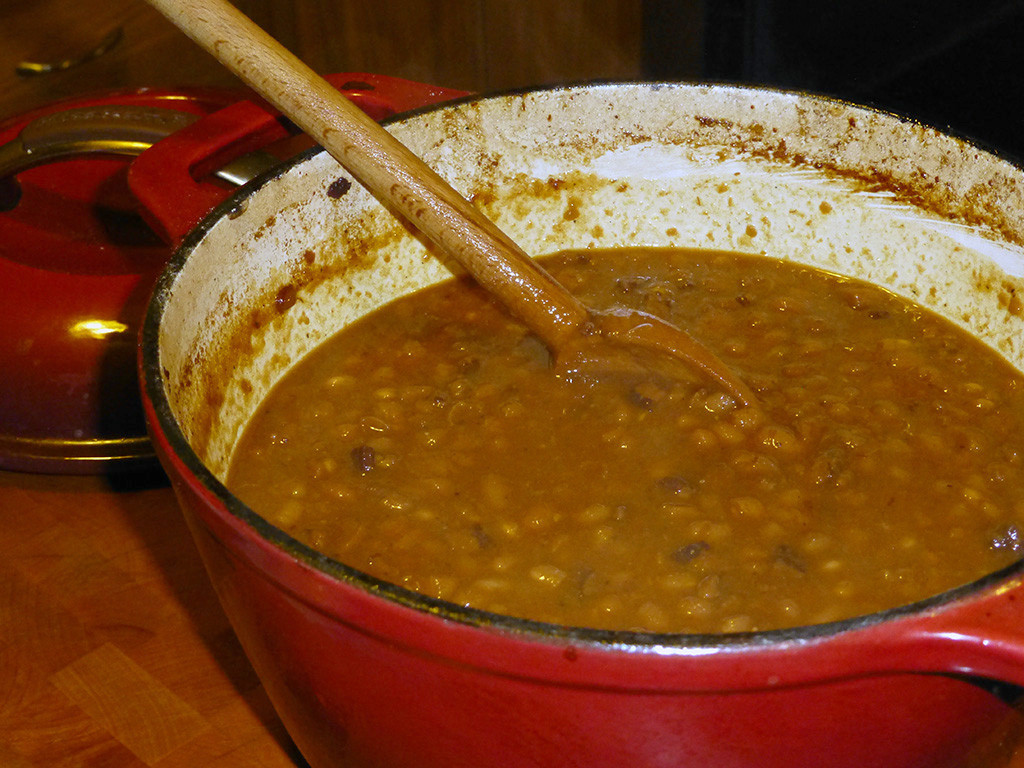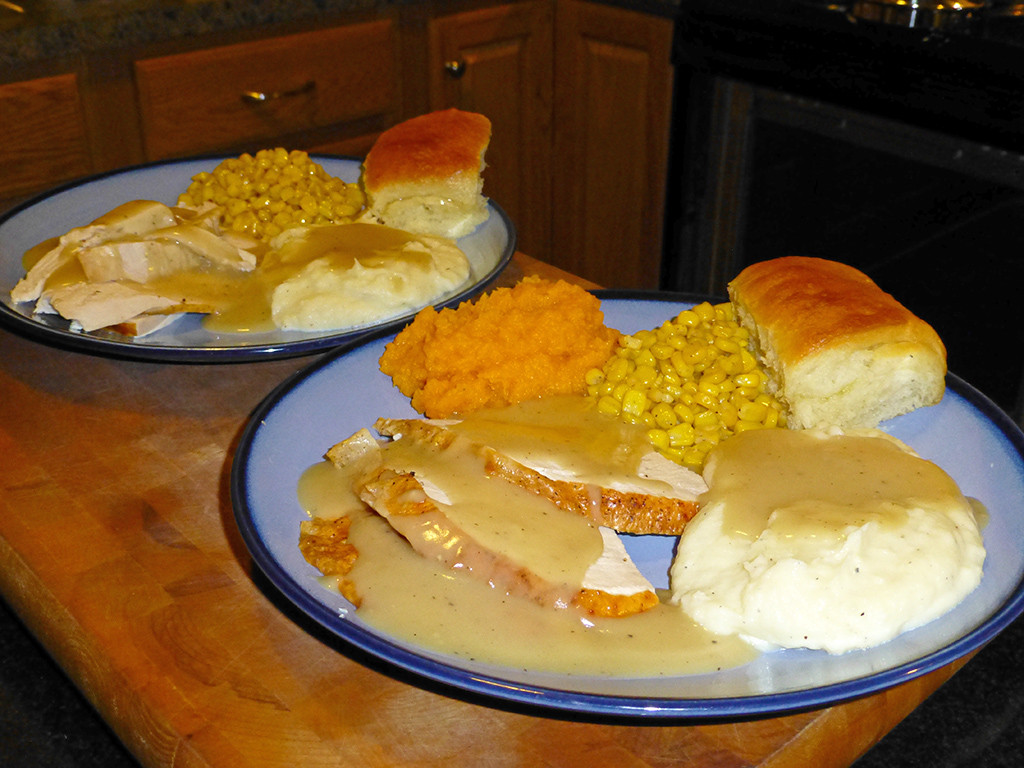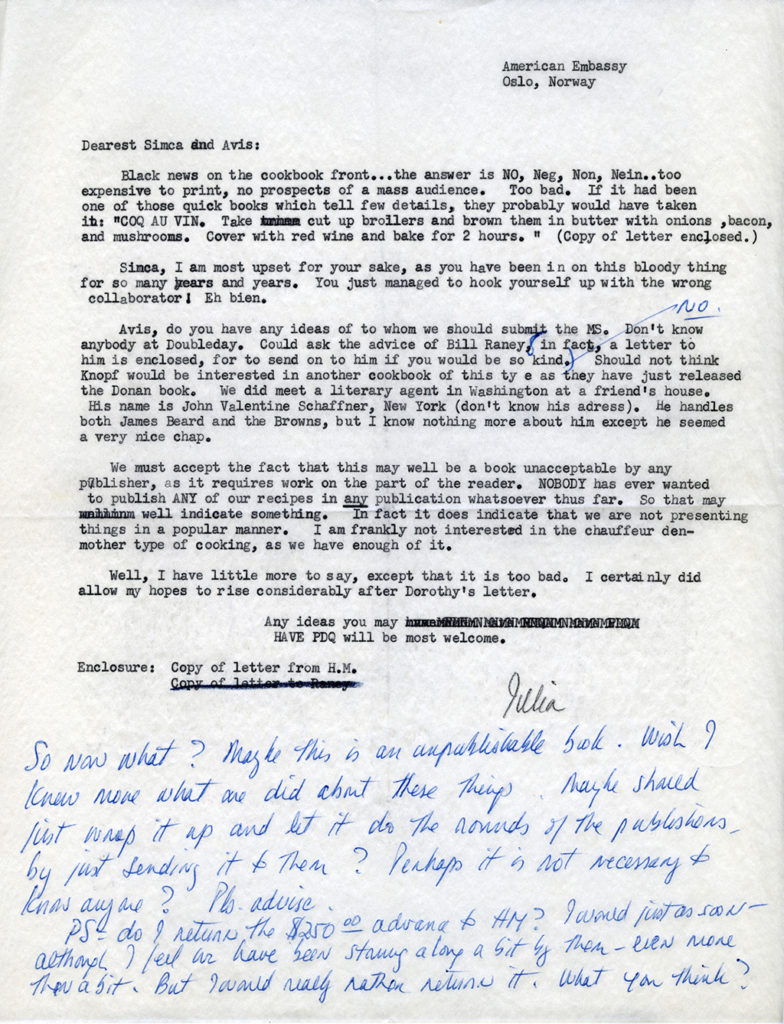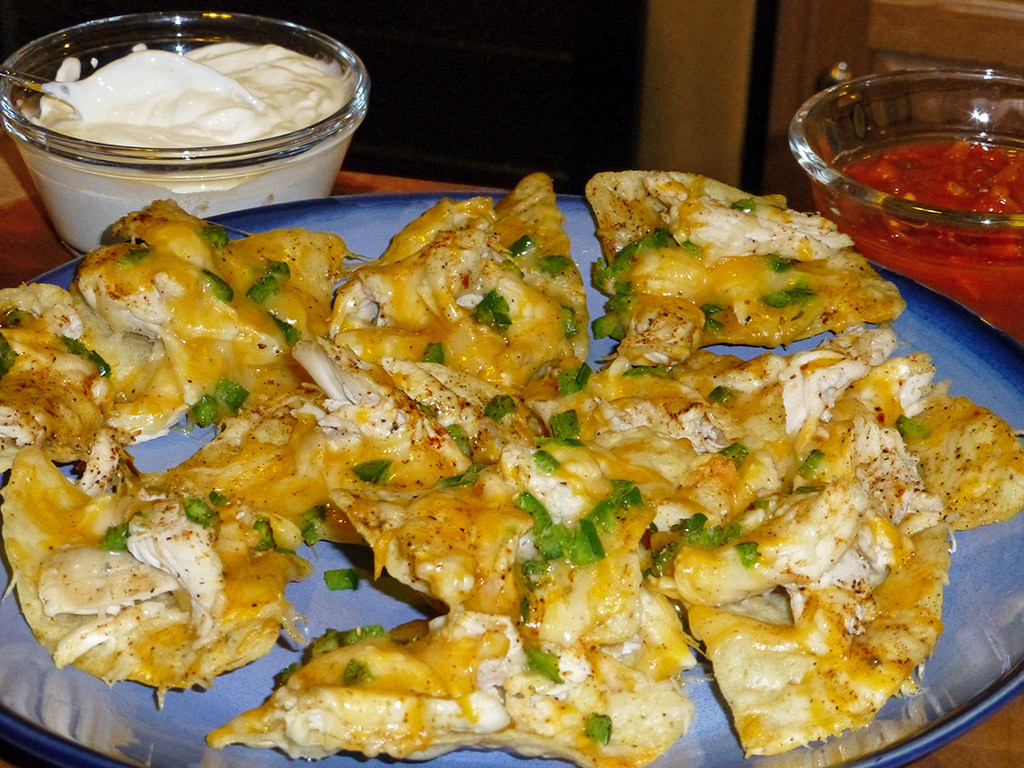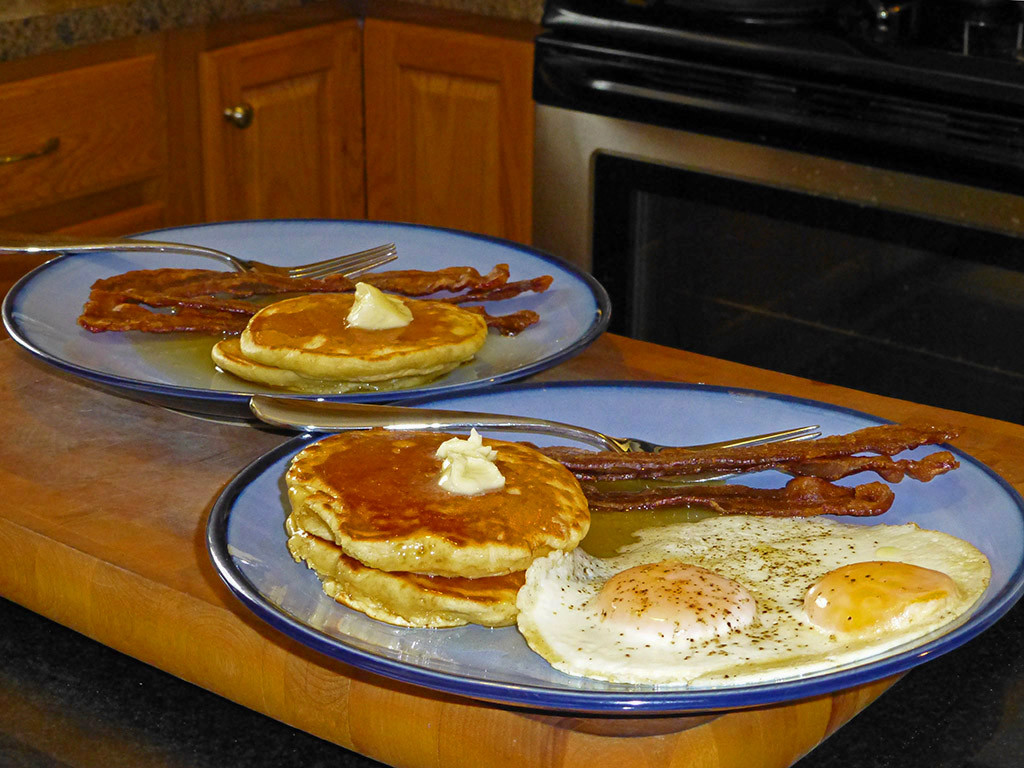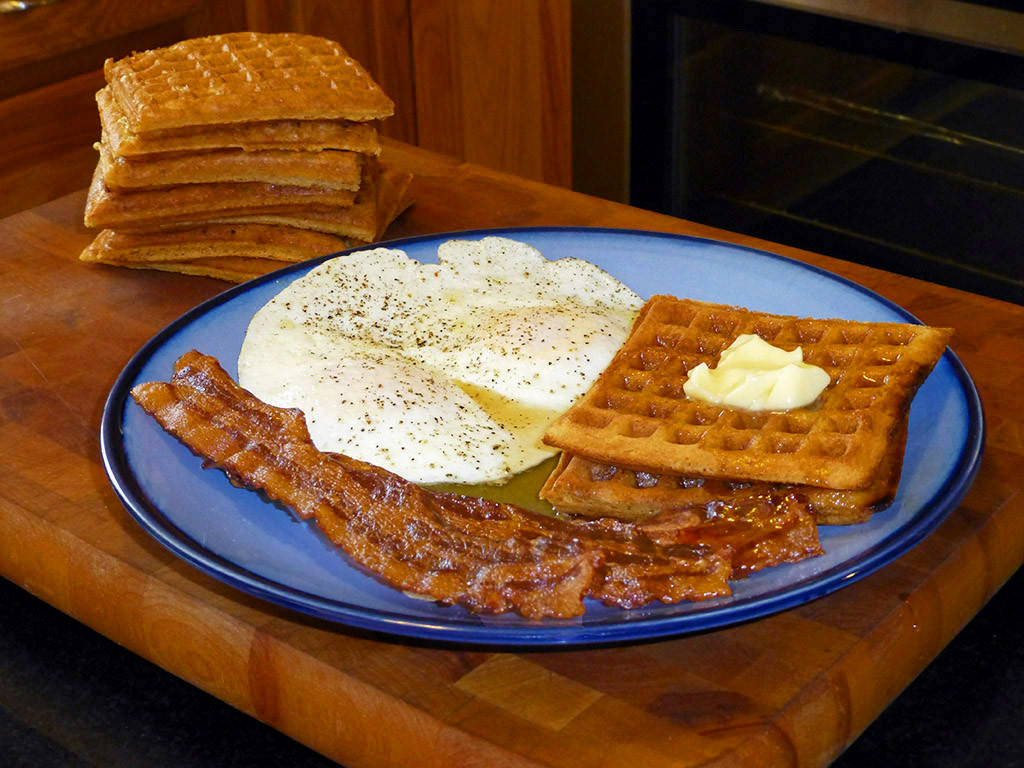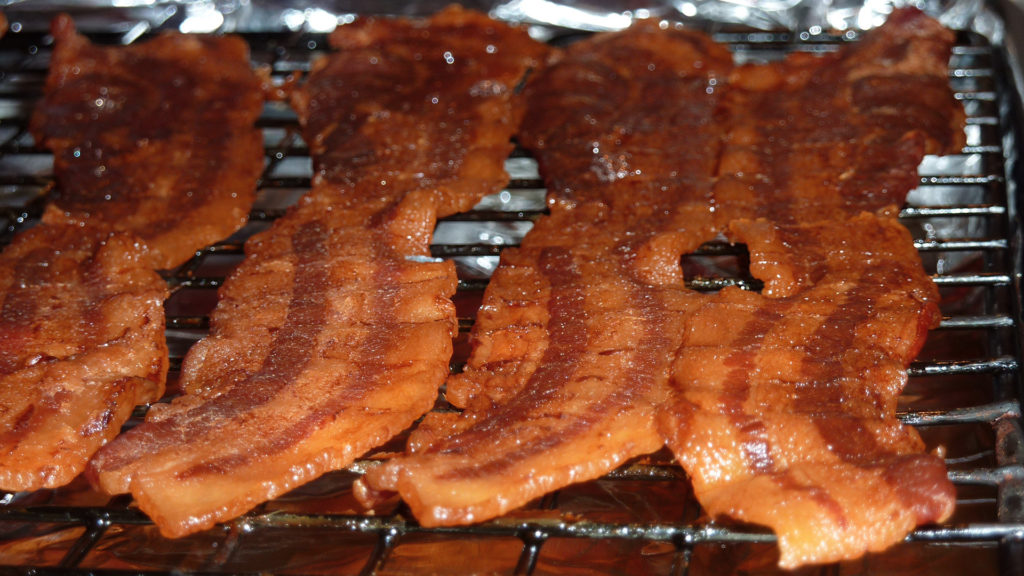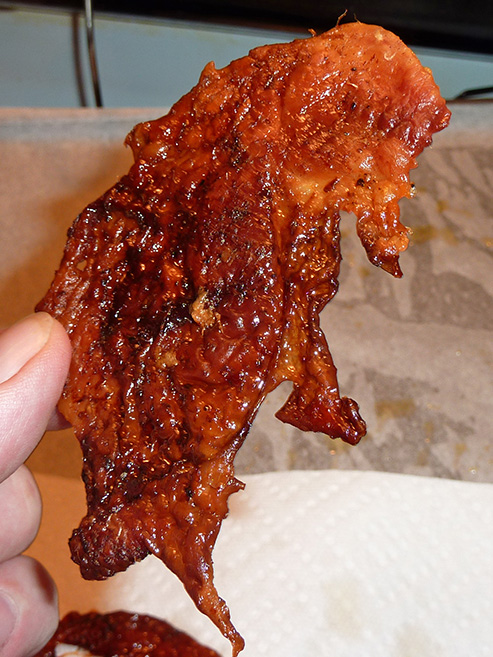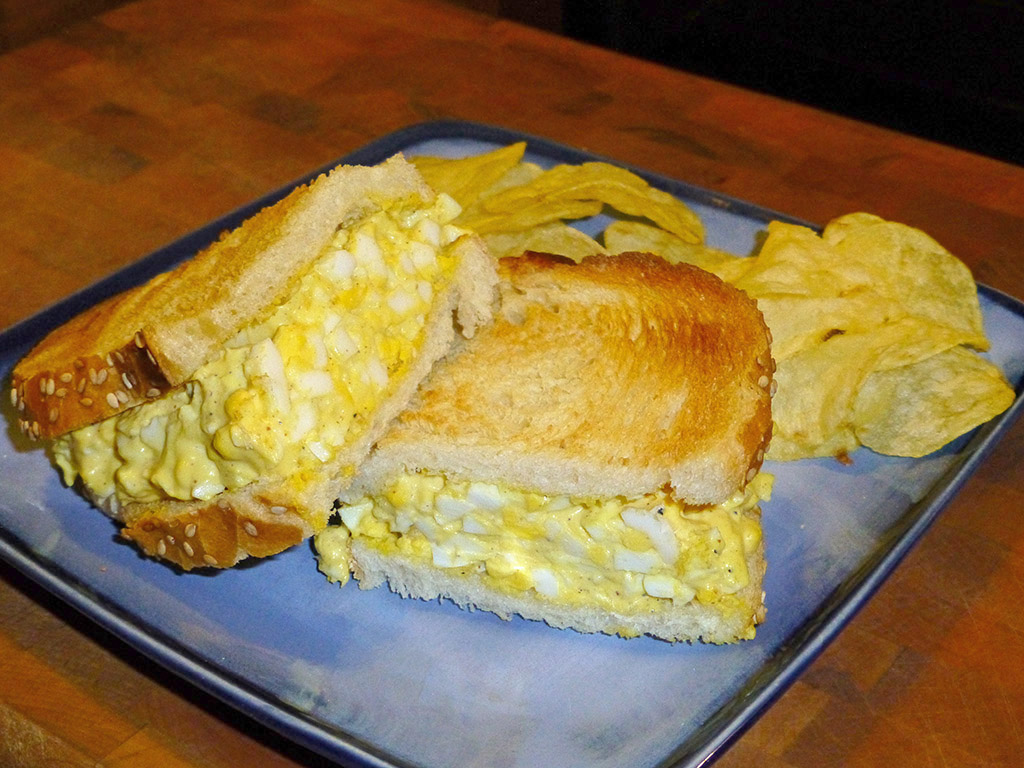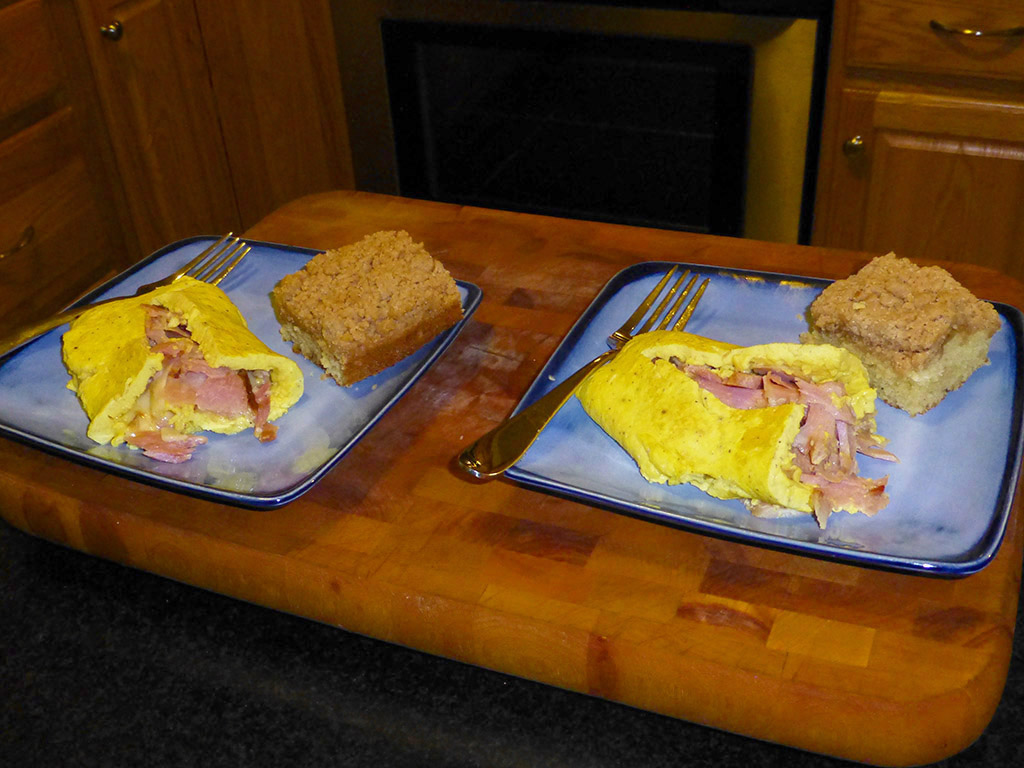Slow-cooked bacon, a couple of laid-yesterday eggs over easy, and pancakes with fresh blackberries inside & maple syrup outside.
Category Archives: Cooking
Thanks again, Jasper White
The fixings for…
…this year’s lobster and corn chowder…
It’s time
Included here are the last Willard Farm tomatoes of the season and nearly the last of their sweetcorn and potatoes. It’s time for the best food of the year.
I can’t wait!
Antidote
Magical fruit
The first part of Christmas dinner is done: Jasper White’s Boston Baked Beans, from this updated version of his recipe originally published in Jasper White’s Cooking from New England. In the updated recipe, he boosts the oven temperature by a hundred degrees to speed baking, but I like the low and slow method in the original recipe, primarily for the extended olfactory hit, so I baked them at 250º F for about five hours.
The menu this year:
- Beautiful burger buns, using this recipe, so we can make…
- Pulled pork sandwiches from a dry-rubbed shoulder slow-roasted for five hours at 275º F in an oven bag, with condiments of…
- Cider vinegar barbecue sauce and bread & butter pickle slices – and a little extra pickle juice drizzled on
- Jasper White’s Boston Baked Beans
- Maybe a side dish with corn, maybe not
- Cane syrup pecan pie from John Thorne’s Outlaw Cook, using Lyle’s Golden Syrup, not the corn syrup laughably presented as another choice at the link, because it’s the golden syrup and the rum – or bourbon if you like – that make this recipe special
- Indian pudding – New England’s corn meal-based adaptation of hasty pudding – with vanilla ice cream
I’ll make most of these ahead of time, with the exception of the buns and the pork shoulder.
A happy Thanksgiving
It must be said that six days off is enough to make me happy even without a holiday.
Thanksgiving dinner this year was a tasty Bell & Evans turkey with roasting pan instant stock that made a perfect quart of deeply flavourful gravy, mash, some Trader Joe’s corn (frozen but pretty good), light and fluffy freshly-baked Parker House rolls, and just for me, butternut squash with white pepper and nutmeg.
In past years Market Basket has stocked a few Bell & Evans turkeys, but this year they had quite a large selection priced at a little more than twice the price per pound of, say, a Butterball bird. That might sound expensive, but Bell & Evans birds are miles above others in terms of flavour, texture, and a complete lack of injected saline solution. At other shops, they’re most often priced at 3-4 times the Butterball price per pound.
The next time I cook butternut squash, I’m going to try roasting or steaming them. Boiling infuses far too much water into the porous flesh, which forces you to cook down the mashed result for 20-25 minutes on a medium heat to get it to an unwatery state where its flavour is properly highlighted. Two whole foot-long gourds produce just 3 cups/.7 litres of delicious cooked squash in the end.
The first leftover dish, an hour ago, was a turkey sandwich on lightly toasted sourdough with jellied cranberry sauce and herb & garlic boursin cheese:
I’ll likely be making turkey noodle soup with most of the remaining bird, but more sandwiches are definitely in my future.
Connections
In the midst of reading As Always: The Letters of Julia Child and Avis DeVoto by Joan Reardon, and while separately reading of Mark Twain’s two-week experience as an amateur and eventually too-reluctant Confederate soldier, I discovered an interesting connection.
Avis DeVoto’s husband, Bernard DeVoto, had written an article in Harper’s on the difficulty of finding good kitchen knives in the US – this was in the early 1950s. That article is what prompted Julia to write; he was fairly busy at the time, so his wife answered instead with a four-page letter.
Thus began a long correspondence and friendship, and something else that was momentous. Avis had connections in the publishing world that eventually led to the release of Mastering the Art of French Cooking by Knopf in 1961, nine years after Julia and Avis first exchanged letters in 1952.
The unusual connection I wasn’t aware of until just now – or, rather, for which I hadn’t yet connected the dots – is that Bernard, a historian, was an authority on Mark Twain who curated and edited Twain’s papers. He edited a few books of Twain’s work, including the still in print The Portable Mark Twain, one of the first Twain volumes I read many years ago. Before I knew of the Child connection, I only recently bought DeVoto’s Mark Twain’s America, originally published in 1932, to get a better sense of what the country was like at the times of Twain’s travels.
The final connection is a mention of a particular type of cooking in Virginia City, Nevada, where Twain lived in the early 1860s, from just that volume:
They came to Virginia City as soon as the true value of the Comstock was perceived. They constituted, no doubt, a deplorable source of gambling, pleasure and embroilment. They were not soft-spoken women, their desire was not visibly separate from the main chance, and they would have beheld Mr. Harte’s portrayal of them at Poker Flat with ribald mirth. But let them have a moment of respect. They civilized the Comstock. They drove through its streets reclining in lacquered broughams, displaying to male eyes fashions as close to Paris as any then current in New York. They were, in brick houses hung with tapestries, a glamour and a romance, after the superheated caverns of the mines. They enforced a code of behavior: one might be a hard-rock man outside their curtains but in their presence one was punctilious or one was hustled away. They brought Parisian cooking to the sagebrush of Sun Mountain and they taught the West to distinguish between tarantula juice* and the bouquet of wines. An elegy for their passing. The West has neglected to mention them in bronze and its genealogies avoid comment on their marriages, conspicuous or obscure, but it owes them a here acknowledged debt for civilization.
*Tarantula juice was one of the many names for bastardised whisky in that corner of Nevada, cut with rather novel ingredients. According to J. Ross Browne in the January 1861 edition of Harper’s, “The whisky contained strychnine, oil of tobacco, tarantula juice, and various effective poisons of the same general nature, including a dash of corrosive sublimate; and the gin was manufactured out of turpentine and whisky, with a sprinkling of Prussic acid to give it flavor.”
Apparently, strychnine, deadly in higher quantities, would, in smaller quantities, produce effects not unlike those of methamphetamine. In 1864, Twain wrote of the Dashaway Association, a temperance group started by a group of San Francisco volunteer firemen in 1859. He said its ranks were increasing because the new adherents “fear strychnine more than inebriation.”
It’s what’s for dinner
That’s usually said of beef by the Cattlemen’s Beef Board and the National Cattlemen’s Beef Association – why there is a need for two beef-promoting organisations is beyond me – but tonight it was chicken in the form of chicken nachos. Thin, crisp tortilla chips that hold up to high heat; leftover roast chicken; cheddar, asadero, jack, and queso quesadilla cheeses; some diced jalapeno; and a sprinkling of Mexican spice blend. There are few dishes with a higher satisfaction to effort ratio. That they’re umami for the eyes is a bonus.
Cottage comfort
- Fill a 9×13″ pan with some seared ground beef seasoned with salt, pepper, and rubbed sage; its fond deglazed with a little beef stock; a few tablespoons of Worcestershire sauce; some Trader Joe’s frozen roasted sweet corn; a boatload of buttery, creamy mash; and a veneer of coarsely grated strong cheddar.
- Bake at 375F/190C for 50-55 minutes until it’s piping hot and the cheese is coloured perfectly, comme ci.
- Eat in front of fireplace.
- Make monosyllabic comments sprinkled with grunts to taste.
No popcorn used
The laziest man I ever met put popcorn in his pancakes so they would turn over by themselves.
– W.C. Fields
On a day off with a friend, slow-cooked bacon, eggs sunny side up for me, and pancakes – recipe here. The keys to scrumptious diner-style pancakes: gentle and only brief mixing of the dry into the wet ingredients, malted milk powder, and medium-low on the burner, which will give you 325-350F/160-175C in the pan and result in pancakes that are beautifully caramelised and soft, not crunchy.
Breakfast, slowly
A late breakfast today, with slow-cooked hickory-smoked bacon – or thinly-sliced pork belly if you don’t call this bacon – homemade buttermilk waffles, and a couple of eggs over easy.
The remaining waffles will freeze nicely – about four times nicer than supermarket frozen waffles, in fact.
Slow-Cooked Bacon
With a little experimentation some years ago, I determined that this is the best way to slow-cook bacon: Preheat your oven to 275-285 F (135-140 C). The reason for that temperature? Not just to go slowly, but because the curing salts used in bacon production begin turning bitter at about 300F/150C. Line a large sheet pan with aluminum foil, taking care not to rip it or get holes in it (for easy cleanup). Put a fairly close-mesh wire rack in the sheet pan, then place your rashers on the rack in a single layer, just touching each other. A half-sheet pan will hold about 3/4 lb, 1/3 kilo, or 11-16 rashers of regular cut depending on their width, which varies considerably from package to package.
You can cook more than you need, because these will reheat very nicely with 30 seconds in a microwave. I use a regular (not thick) cut, cured, hickory-smoked bacon for this method; smoked or not is a personal preference, but I’ve found uncured bacon doesn’t work as well. Now, slow-bake it for 90 minutes – yes, 90 minutes. (Because bacons vary considerably, you should start taking a look at the 75 minute mark and maybe every 5 minutes thereafter so it doesn’t get too dark. I also look at the wetness: When the rashers start to look not completely dry but more dry than wet, they’re perfectly done.) What happens is magical. You end up with slices that are about 90% of their original size and about one-fifth of their original weight, and about a half-cup of perfectly clear bacon drippings in the (lined) pan. The bacon is a deep color with no burned parts at all, has very little grease (it’s all in the pan), and absolutely melts in your mouth. In fact, the cooked bacon is so delicate and wafer-like that some pieces will probably break in two from their own weight when you remove them from the rack to paper towels to drain.
The best part is that the bacon is now reduced to almost pure flavour, and it will be the most intense bacon flavour you are ever likely to encounter. It may be difficult to restrain yourself and actually make the rest of your breakfast or BLTs instead of scarfing down the whole lot straight out of the oven. It’s also probably a bit healthier for you, since 80% (or so) of the fat is gone and sitting in the pan.
You can bake chicken skin in a similar low-and-slow manner, but between layers of parchment paper, with a second pan sitting on top to keep it flat.
Blizzard Food
Too lazy to cook
Internal conversation:
“So…chicken livers sautéed with garlic & sage, some potatoes dauphinoise, and lemon-dill carrots tonight?”
“Nah, too lazy. Egg salad.”
The eggs were laid just yesterday, so they were tough to peel, but add a little homemade mayonnaise, some salt and pepper, a squidge of spicy brown mustard, and some ground celery seed and the effort’s worthwhile.
Cooking catchup
Catching up with some recent dishes I’ve made, from last night’s pea soup back to Thanksgiving dinner. Click any picture to view these in a gallery.
Christmas breakfast
After Christmas Eve dinner of cider-baked ham, breakfast Christmas morning was a shared four-egg ham and cheddar omelette with Americanos and the always delightful cinnamon crumb coffeecake from the King Arthur Flour Baker’s Companion, recipe below.
Cinnamon Crumb Coffeecake
From the King Arthur Flour Baker’s Companion
Makes two 8-inch rounds, one 13 x 9-inch pan, or one 9- or 10-inch tube pan.
CRUMB:
2 1/2 cups (10 1/2 ounces) unbleached all-purpose flour
1 1/4 cups (8 3/4 ounces) sugar (caster sugar)
1/2 teaspoon salt
2 teaspoons ground cinnamon
1 cup (2 sticks, 8 ounces) butter, melted
1 teaspoon vanilla extract
Scant 1/2 teaspoon almond extract
CAKE:
8 tablespoons (1 stick, 4 ounces) butter, at room temperature
1 cup (7 ounces) sugar (caster sugar)
2 large eggs (2 oz. each with shells)
2 teaspoons vanilla extract
1 cup (8 ounces) sour cream
2 cups (8 1/2 ounces) unbleached all-purpose flour
1/2 teaspoon baking soda (bicarbonate of soda)
1/2 teaspoon salt
1 teaspoon baking powder
Confectioners’ sugar (icing sugar), for dusting
Preheat oven to 350 degrees F/175C. Grease two 8-inch round cake pans, a 9 x 13-inch pan, or a 9- or 10-inch tube pan.
TO MAKE THE CRUMB: In a medium-sized mixing bowl, whisk together the flour, sugar, salt and cinnamon. Melt the butter in the microwave or small saucepan and add the vanilla extract and almond extract to it. Pour the butter into the flour mixture and mix until all the butter is absorbed and you have a uniformly moistened crumb mixture. Set aside while you make the cake batter.
TO MAKE THE BATTER: In a large mixing bowl, cream the butter and sugar until light and fluffy. Add the eggs one at a time, and beat between additions. Scrape down the mixing bowl, then beat in the vanilla and sour cream.
In a medium-sized bowl, whisk the flour, baking soda, salt, and baking powder together. Add to the butter/sour cream mixture, mixing until evenly combined. Pour the batter into the greased baking pan(s). Crumble the crumb mixture over the top, until the batter is completely covered.
Bake for 20 to 25 minutes for 8-inch rounds, 30 to 35 minutes for a 9 x 13-inch pan, or 35 to 40 minutes for a 9- or 10-inch tube pan. Bake until a tester inserted in the center comes out clean. Remove the cake from the oven and cool on a rack; dust the top with confectioners’ sugar, if desired.


